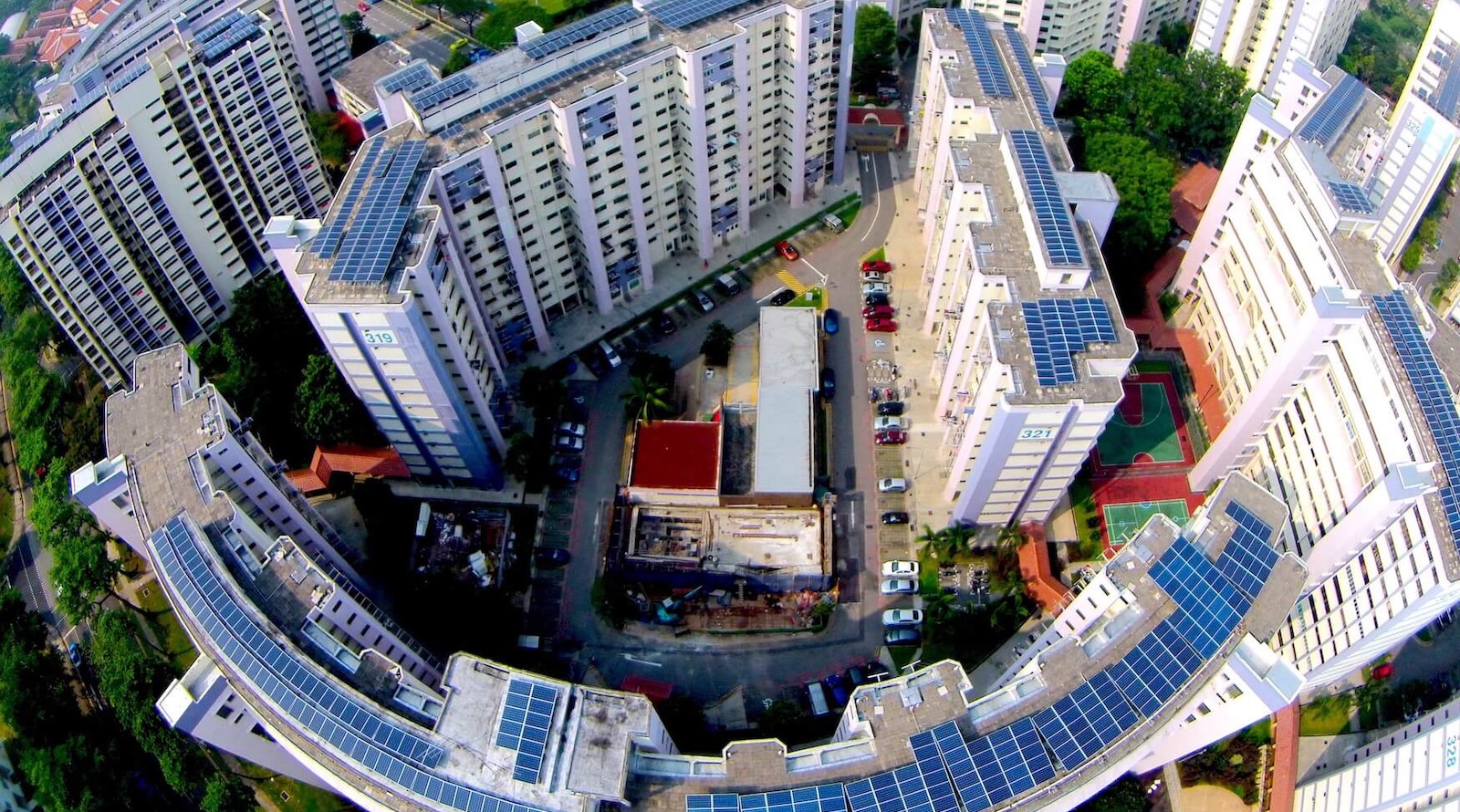Singapore keeps the sun shining on solar projects, despite the lack of land, by creatively managing where to “solarize.”
In 2014, Singapore’s Housing and Development Board (HDB) and the Economic Development Board (EDB) launched their national blueprint for integrating solar energy on a massive scale. But not on much needed land. It was to be set up on public housing rooftops and government buildings. They call it SolarNova.

SolarNova’s main objective is to significantly increase Singapore’s overall solar installed capacity, feeding cleaner energy directly into the national grid. The country’s science ministry says there are 2064 hours of sunlight annually. That’s about 5 hours and 39 minutes of sunlight per day — practically half of the daylight hours can be captured and converted to electricity.
Installing solar panels of public housing and commercial building rooftops encourages the widespread embrace of solar energy across both residential and commercial sectors.
The SolarNova project supports research and development, collaborating with institutions like the Solar Energy Research Institute of Singapore (SERIS) to ensure systems are efficient and cost-effective for a tropical, urban environment and private initiatives like EDP Renewables (EDPR) for technology and implementation.
Involvement from Portuguese energy company EDP Renewables (EDPR) in SolarNova comes after it acquired a local startup Sunseap, which started implementing projects in 2015. The initial solar panel rollout involved hundreds of public housing blocks.
In February 2024, EDPR stepped in for Sunseap in Phase 8 of SolarNova. The installation will produce 200 megawatt-peak (MWp) from the sun. This involves deployment and installation of solar panels across 1,075 public housing buildings and 101 government-owned structures, including schools, until the end of 2027. It now is both the largest solar project in Singapore and the largest project under the SolarNova program.
The energy generated from these SolarNova projects directly feeds into Singapore’s national electricity grid. This influx of renewable power is vital for diversifying the nation’s energy mix, reducing its heavy reliance on imported natural gas, and enhancing its energy security.
The SolarNova program is a major contributor to Singapore’s national solar targets of 1.5 GWp by this year and an ambitious 2 GWp by 2030. The program itself is projected to generate an estimated 420 gigawatt-hours of solar energy annually, translating into substantial carbon emission reductions.
As of this writing, Microsoft has agreed to purchase 100 percent of the renewable energy exported to the grid from EDPR’s SolarNova 8 project, comprising up to 200 MWp of capacity.
“We are strengthening EDP’s global collaboration with Microsoft through this project and together we are taking a step towards achieving Singapore’s sustainability goals of at least 2GW peak of solar energy by 2030. Contracting with Microsoft is a catalyst for accelerating the energy transition and to continue investing in the region,” Miguel Stilwell d’Andrade, CEO of EDP, said in a press statement.
Disclaimer: SolarNova and EDPR did not sponsor CleanTechnica on this coverage. It was part of a trip sponsored by Amazon Web Services for the AWS Innovation Center. EDP helps power AWS operations in Singapore via a virtual clean energy PPA. CleanTechnica pursued the stories while in Singapore.
Sign up for CleanTechnica’s Weekly Substack for Zach and Scott’s in-depth analyses and high level summaries, sign up for our daily newsletter, and follow us on Google News!
Whether you have solar power or not, please complete our latest solar power survey.
Have a tip for CleanTechnica? Want to advertise? Want to suggest a guest for our CleanTech Talk podcast? Contact us here.
Sign up for our daily newsletter for 15 new cleantech stories a day. Or sign up for our weekly one on top stories of the week if daily is too frequent.
CleanTechnica uses affiliate links. See our policy here.
CleanTechnica’s Comment Policy

